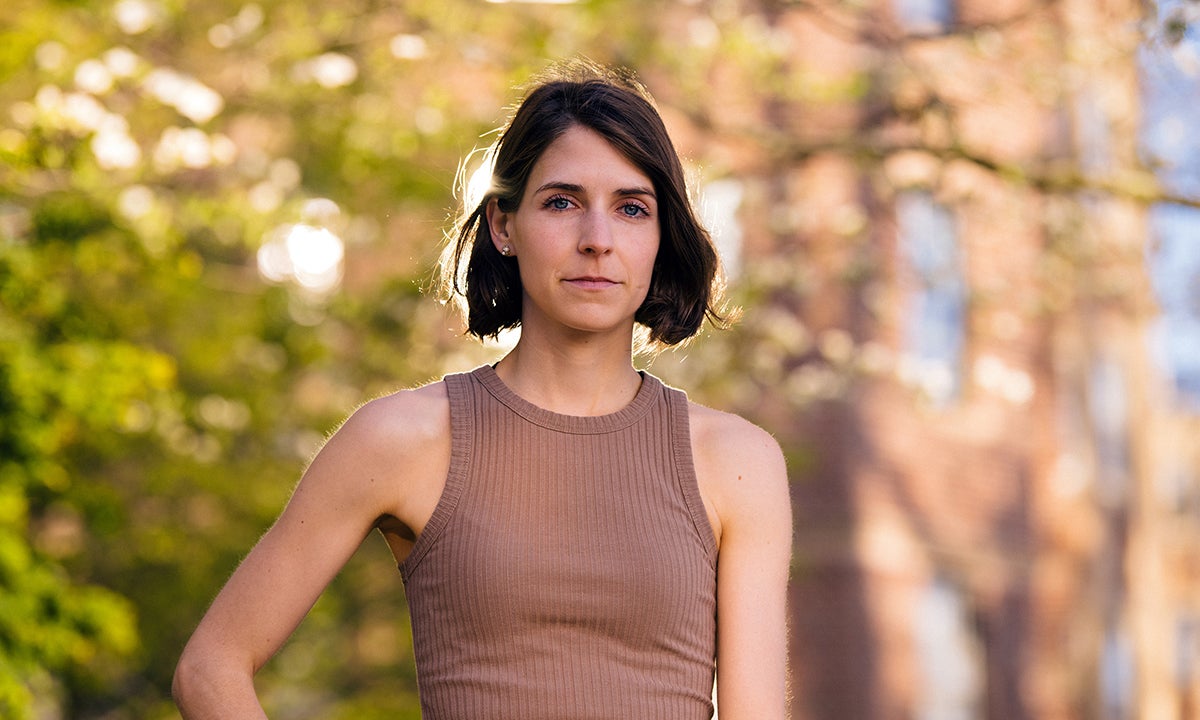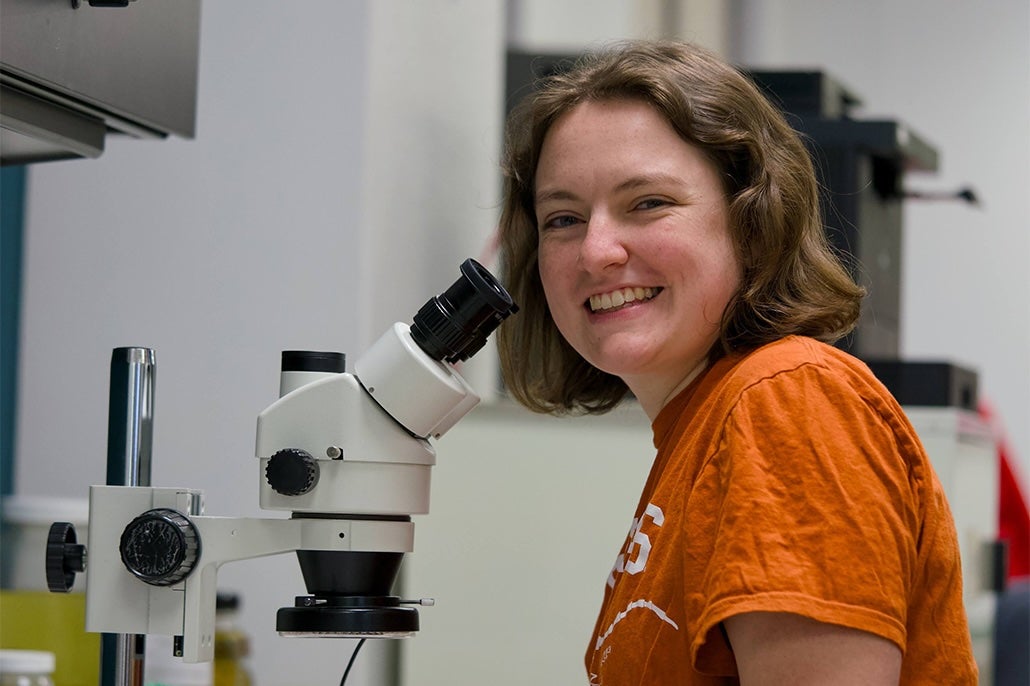Alumna Lisa Piccirillo Solves Famous 50-year-old Math Problem
During her graduate studies at The University of Texas at Austin, Lisa Piccirillo solved a problem that had bedeviled mathematicians for five decades.

During her graduate studies at The University of Texas at Austin, Lisa Piccirillo solved a problem that had bedeviled mathematicians for five decades. Her discovery, published in the Annals of Mathematics, excited the math world and drew coverage from The Boston Globe, The Washington Post, Quanta, Popular Mechanics and more.
Piccirillo first learned of the Conway Knot problem, posed in 1970 by famed mathematician John Conway, at a 2018 University of Texas at Austin mathematics conference. She solved the problem less than a week later, using techniques learned in her related work.
"There's a strong stereotype of what people who do math are like – introverted, nerdy, probably male, probably dead – and I was none of those things," Piccirillo told New Scientist. "I was very worried that I would have to give up other aspects of myself to be a math robot and I didn't want to do that. I felt that tension very acutely in my undergraduate program, but in graduate school, I learned that this tension isn't real. Mathematicians are interesting humans and none of them are geniuses."
The problem mathematicians could not solve was whether or not the Conway knot is "slice," a concept that relates 3D knots to shapes in the fourth dimension. Slice means the knot is a cross section of a 4D shape, while not slice means it cannot be cut from a 4D shape.
To better grasp this concept, picture the same idea in the 3D world we're used to. Imagine you cut an orange (three-dimensional) into round slices that were closer to two-dimensional. The resulting circles of oranges would be "slice" because they can be cut from the original 3D shape. A circle with a hole in the middle, however, could not be cut from the original shape and it is therefore not slice.
Slice and not slice works in higher dimensions, only instead of a 3D sphere (an orange) being cut, it is a 4D shape –– a knotted 2D sphere.
To get at this "sliceness" question, Piccirillo drew a knot analogous to the Conway knot. Then, she demonstrated that the similar knot was not slice. This solved the Conway knot too: not slice.
Piccirillo grew up in a small Maine town, where she explored an interest in mathematics from a young age. After completing an undergraduate degree in mathematics at Boston College, Piccirillo chose to attend UT Austin. On why she made this choice, The Boston Globe wrote of her: "After graduating in 2013, she chose to pursue her doctorate at the University of Texas because of the university's excellent topology program and its reputation as a great place for female math students."
Piccirillo made the most of these aims, joining the graduate program in topology – which, according to U.S News & World Report, ranks #8 in the country – and becoming an organizer for the Distinguished Women in Mathematics Lecture series.
"At UT I didn't worry that my interests, personality or background implied I couldn't be a good mathematician," Piccirillo wrote in an email. "I was surrounded by folks who had all sorts of interests, backgrounds, commitments, who were all strong mathematicians and, more importantly, compelling humans. I was relieved not to stand out as much as I otherwise might have."
Shortly after she graduated from UT Austin in 2019 and took the campus's top dissertation award, The Massachusetts Institute of Technology recruited Piccirillo to be an assistant professor.
"The change from being a relatively unknown Ph.D. student to very visible MIT faculty has been surreal," she said. "And while it can be daunting to live up to this role, it's also exciting. I have enormous respect for the position and feel very privileged to have this opportunity."
Read More
A math problem stumped experts for 50 years. This grad student from Maine solved it in days, Boston Globe
Graduate student untangles nature of Conway knot, Washington Post
Graduate Student Solves Decades-Old Conway Knot Problem, Quanta
Young Mathematician Solves Old, Famous Knot Problem in Barely a Week, Popular Mechanics
Update: On September 10, Lisa Piccirillo was announced as one of the first winners of the prestigious new Maryam Mirzakhani New Frontiers Prize from the Breakthrough Prize foundation.



